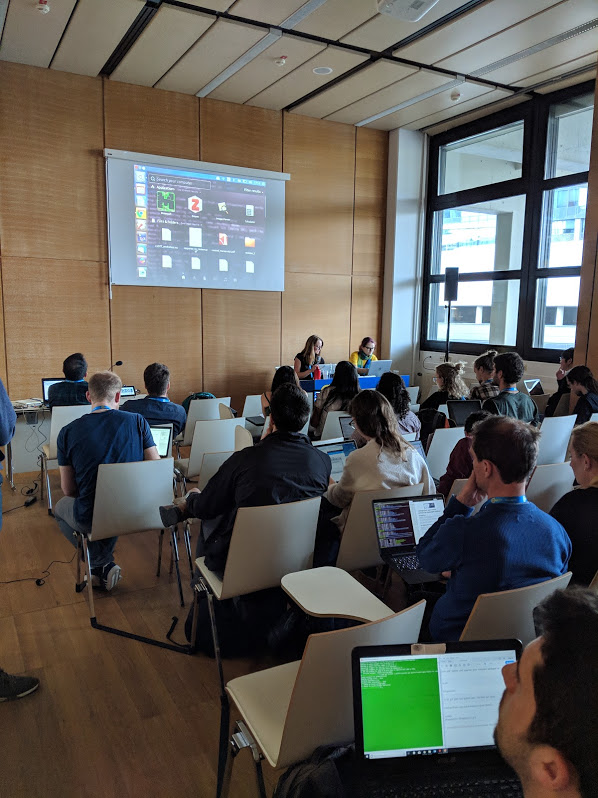The challenges of running a workshop at a major conference (EGU General Assembly)
The challenges of running a workshop at a major conference (EGU General Assembly)
Posted on 8 July 2019
The challenges of running a workshop at a major conference (EGU General Assembly)
 Photo courtesy of Stuart Grieve.
Photo courtesy of Stuart Grieve.By Stuart Grieve, Software Sustainability Institute Fellow
In a previous post, I wrote about the process of and rationale for organising a workshop as part of a large international conference. To recap, as part of my Institute Fellowship, I, alongside colleagues ran a workshop in April at the EGU General Assembly in Vienna, the largest geoscience conference in Europe with over 16,000 attendees.
We found a series of practical limitations to the type of workshop we had intended to run:
-
Attendee management
-
Room layout
-
Room size
-
Internet access
Attendee management
We set up a Google Form where interested participants could sign up for the workshop, giving basic contact details and information on the operating system they were using. We kept the form as brief as possible, to encourage responses, and included a link to it in all the pre-conference publicity. However, there is no facility to require registration for attendees at workshops at EGU, so this would only give us a rough indication of numbers of attendees. In the end, we had 5 registrations, 4 of whom turned up, with the remaining 35 to 40 attendees just showing up on the day.
Room size and layout
As we were not able to gather any meaningful information on the number of people attending the workshop until it began, we could not provide any guidance on what size of room we would require. As a result we were placed in a room with a capacity of 40 and ended up having to turn people away. We hope that this experience will mean we can request a larger room next year if we run the workshop again, though there are a limited number of workshop rooms available and a growing number of workshops being run at this conference.
In an ideal world the workshop would have been run in a room laid out with clusters of desks, providing easy access to the attendees for the team teaching the workshop. But again this was restricted by the conference, and we were not able to adjust the layout of the rooms. The room was laid out in rows, with limited access to power points, and not enough space for the teaching team to circulate and answer questions easily. This is a common issue amongst workshop organisers at the conference, and we are in the process of raising this issue to the organising committee in the hope that it can be resolved for next year's meeting.
Internet access
We had some experience of the quality of the wifi in parts of the conference venue and so were able to prepare for the eventuality that we would not have internet access. Much of the materials required were available as docker containers, which we were able to place on a series of memory sticks alongside the rest of the workshop materials. However, everything we had planned had assumed some internet access, and so we spent a lot of time modifying our materials as we went. In future, the solution may be to design an entirely offline workshop, and invest in even more memory sticks to distribute data more efficiently.
Next year
Our experience of organising this workshop has been positive, even amongst these challenges and we are hoping to organise an even better workshop next year, armed with our experiences this year. Since the workshop, we have seen an increase in downloads of our software, and an increase in engagement from interested users and potential new collaborators. There is a clear appetite for more workshops of this kind in the geosciences and I am delighted that I had the opportunity to contribute one to the community through my Fellowship.
